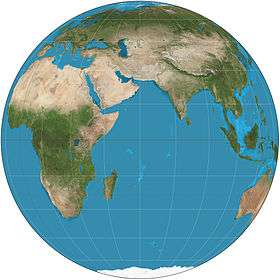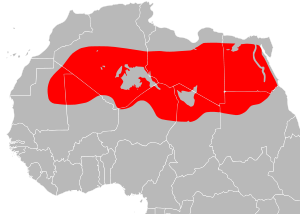Five themes of geography
The five themes of geography is an educational tool for teaching geography. Adopted in 1984 by the Association of American Geographers, those five themes were published in the NCGE/AAG publication Guidelines for Geographic Education, Elementary, and Secondary Schools. Most American geography and social studies classrooms have adopted the five themes in teaching practices.[1]


Themes
The five-theme organizational approach was superseded by the Geography for Life standards published by the National Geographic Society United States Of America, a set of eighteen standards promulgated in 1994. However, the five themes continue to be used as an educational approach in many educational outlets.[1]
Five Themes:[2]
- Location
- Place
- Human-Environment Interaction
- Movement
- Region
Location
Every point on Earth has a location. Location can be described in two different ways:
- Absolute location, a location as described by its latitude and longitude on the Earth. For example, the coordinates of Albany, New York are 42.6525° N, 73.7572° W.
- Relative location, a location as described by where it is compared to something else. For example, Albany, New York is roughly 140 miles north of New York City.
Place
A place is an area that is defined by everything in it. All places have features that give them personality and distinguish them from other places.
- Toponym: a place name, especially one derived from a topographical feature.
- Site: an area of ground on which a town, building, or monument is constructed.
- Situation: the location and surroundings of a place.
- Population: the number of people that live in the area.
Human-environment interaction
This theme describes how people interact with the environment, and how the environment responds, with three key concepts:[3]
- Dependency: Humans depend on the environment.
- Adaptation: Humans adapt to the environment.
- Modification: Humans modify the environment.
Movement
Movement is the travel of people, goods, and ideas from one location to another, or political events. Examples of movement include the United States' westward expansion, the Information Revolution, and immigration. New devices such as the airplane and the Internet allow physical and ideological goods to be transferred long distances in short time intervals. A person's travel from place to place, and the actions they perform there are also considered movement.
Example: Buses, Airplanes, Cars, and Boats.
Region
Regions are areas with distinctive characteristics: human characteristics, such as demographics or politics, and physical characteristics, such as climate and vegetation. For example, the US is a political region because it shares one governmental system.
References
- Ganzel, Karen. "Geography Lesson Plans Using Google Earth". Lesson Planet. Retrieved April 28, 2010.
- Rosenberg, Matt. "The Five Themes of Geography". About.com. Retrieved November 16, 2013.
- "The Five Themes of Geography" (PDF). Retrieved 2 June 2015.